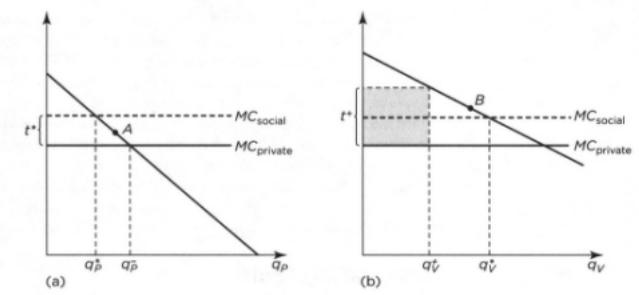In Figure 19.6, the optimum (left(E_{0}, C_{0} ight)) is shown as the point at which the marginal
Question:
In Figure 19.6, the optimum \(\left(E_{0}, C_{0}\right)\) is shown as the point at which the marginal rate of transformation of \(E\) for \(C\) equals the consumer's marginal rate of substitution of \(E\) for \(C\). Yet \(E\) is a public bad. Why does this appear to violate the Samuelson conditions for optimal provision of a public bad/good?
Figure 19.6

Fantastic news! We've Found the answer you've been seeking!
Step by Step Answer:
Related Book For 

Question Posted:





